World EV Day 2021: Top tips for fleets switching to electric vehicles
To mark World EV Day 2021, we asked the fleet and leasing sector for their top tips on how drivers and businesses can go electric. Natalie Middleton reports.
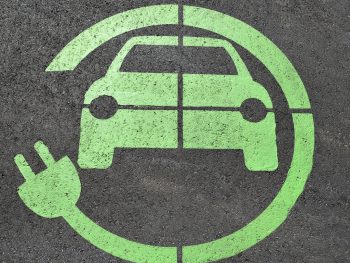
Changes have been driven by growing eco awareness but also major developments in battery & vehicle tech and the choice of EVs
The fact that we’re now celebrating a second annual World EV Day shows just how much the electric vehicle sector has evolved and turned into a global movement.
Changes have been driven by growing eco awareness among corporates and drivers but also the extensive developments in battery and powertrain technology and the charging infrastructure, and a much-wider choice of electric vehicles on sale.
In the UK, the zero- and low-emission Benefit-in-Kind ratings since the 2020/21 tax year have also played a key role in driving demand, alongside the announcement late last year of the 2030 ICE ban.
So in the countdown to 2030, how should fleets best go electric?
We asked the experts in the field…
Equip fleet managers as EV champions
Alfonso Martinez, managing director at LeasePlan UK

It’s essential that businesses provide access to the right tools so that fleet managers are equipped with EV knowledge
“Behind any smooth and efficient transition is a well-trained and resourced fleet manager. They are the backbone of the company fleet, and in most workplaces are considered the go-to person for all matters related to EVs. This means that they are the first port of call whenever anyone has any questions or issues.
“The trouble is that while they may be EV champions, many fleet managers feel like they lack the sufficient expertise to advise their team with confidence – as highlighted in our recent research. Therefore, it’s essential that businesses, supported by the wider industry, provide comprehensive training and access to the right tools so that fleet managers can fulfil their role and provide the necessary support to their team.”
Get key stakeholder support
Matt Cranny, director – complete brand, leasing & supplier manager at ARI Fleet
“Before thinking about EVs and charging, a business must identify the key stakeholder that will be driving the change – this should be a senior executive and one who will sponsor the change.
“Moving to EVs involves much more than the vehicle and touches many parts of the business. Releasing cross-functional resources will be crucial, but there will always be competing priorities, so ensuring it remains a top priority will require senior-level agreement.
“Companies must then identify the business case. Ideally, you will want the move to EVs to be cost neutral – however, this is not always possible, so the true objective of this change, for example, CSR, cost or staff retention, must be agreed upon at the outset. This clarity will be crucial further down the line when conflicts arise.
“Finally, conduct a trial – identify a key segment of your fleet to trial EVs in. This will help reinforce the business case, give confidence to your senior stakeholder and enable you to learn and make informed decisions. All of which will be vital to a broader roll out across the business.”

Telematics data will aid you in identifying the ‘low hanging fruit’ in your fleet
A data-driven transition
Barney Goffer, UK product manager at Teletrac Navman
“Switching might feel daunting but it doesn’t need to be. Telematics data will aid you in identifying the ‘low hanging fruit’ in your fleet. In many use cases, switching today means saving tomorrow, by using telematics tools to prioritise and analyse your fleet, businesses can make accurate decisions on which vehicles are suitable to start their journey towards electrification – remember, you don’t have to switch all your vehicles today, it’s a transition that will take time and careful planning, let telematics data be your guide, it’s all about data, data and more data.
“And in shorter, list form..
- Don’t put it off – start practically planning your switch today
- Use the data available to you to assist decision making
- Make the most of government grants and incentive schemes.”
Adopt an holistic approach across the workplace
Adam Hall, director of energy services, Drax
“An essential priority for businesses is to ensure that their workplace is EV-friendly. With more employees returning to the office, EV drivers will want to charge their vehicle at work.
“Fleet-operating businesses also need to analyse their existing assets as part of their EV roadmap. While swapping the entire fleet out for EVs at once is unfeasible for many businesses due to the cost and vehicle suitability, they should consider taking a piecemeal approach. They will then be able to identify which of their vehicles are suitable for an EV, and when, allowing them to start making progress at the earliest possible stage.”
Start the planning process now
David Bushnell, principal consultant, Alphabet (GB)
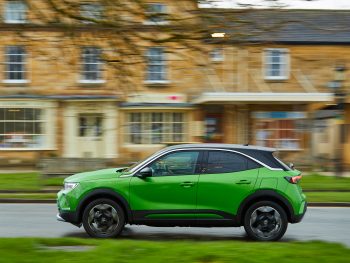
Fleets should start the EV planning process now and get ahead of the transition
“The most important step to take in your shift to electric is to start your transition today. With the help of the right fleet partner, you can be guided through the full process and get ahead of the 2030 deadline. Misconceptions are often made that huge changes will need to be made to your company’s existing fleet policy, but this is not the case. The right partner will consult and guide you end-to-end, immersing themselves in your journey and removing potential stressors from fleet managers.
“Alongside this, it is also crucial to engage all stakeholders from the very start to ensure the benefits of converting your company car scheme to electrified vehicles are fully understood. This should be across various functions of the business, including HR, procurement, finance, CSR and operations. Everyone needs to buy into the change and be part of the journey to electrification, otherwise they will simply see a more expensive electrified vehicle at face value and not understand the tax savings and benefits that come with it. While led by the fleet team, implementing electrified fleets with the support of the whole business will ensure the easiest transition.”
Focus on what’s currently possible
Olly Craughan, head of CSR, DPDgroup UK
“Our board wanted to do this because it’s the right thing to do environmentally, but also commercially. So, we started from a place where transitioning the fleet to EV was understood from the top. But it is vital to have buy-in from all key stakeholders, including drivers and making sure they’re engaged with the journey every step of the way.
“It is important to communicate that electrifying your fleet isn’t going to be easy. One of the biggest challenges is still charging EVs and how that will impact your business operationally.
“It is about focusing on what is possible now with the technology and the vehicles available. There are too many companies waiting for the perfect time or focusing on what can’t be done yet due to the limitations.
“You can’t do everything at once. You have to start with a catalyst like aiming for that first EV order, or your first 100 EVs, so you can make that transition more manageable.
“It is important to look at the total cost of EV ownership and then set a budget to work within, rather than just be put off by the higher initial costs.”
Knowledge is key
David Savage, vice president, UK & Ireland, Geotab
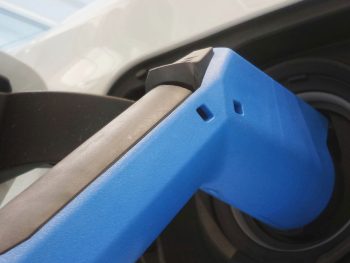
Geotab’s EVSA tool can help you determine which EVs to switch now
“Four-in-ten vehicles in the UK could switch to electric today and save money over the course of a vehicle’s life. That’s the conclusion of our latest survey into EV suitability for company fleets.
“We’re fast approaching the deadline for the ban of new petrol and diesel car sales as efforts to decarbonise the transport industry accelerate. But why wait until 2030? Almost all companies could benefit from running a mixed fleet of EV and conventional internal combustion engine (ICE) powered vehicles.
“Our top tip is to use our Electric Vehicle Suitability Assessment (EVSA) tool to see which vehicles in your fleet can switch to electric. The EVSA offers an in-depth analysis for a wider range of EV makes and models to help businesses transition towards greener, electric energy in support against climate change.
“That’s why we’re happy to celebrate World EV today and join the drive towards an electric future.”
Train drivers on vehicle use and charging
Andy Mitchell, commercial director at RED Driver Risk Management
“Driving an EV is remarkably similar to driving a conventional car – but there are key differences which are important to share with your employees before letting them get behind the wheel.
“Firstly, they need to understand how the driving style differs (most are shocked at the instant torque available so our training focuses on smooth application of the accelerator and brake). Using regenerative braking is also a skill they need to acquire, as is adapting to the lack of engine noise.
“Then it’s a case of ensuring they are competent in connecting and disconnecting a charge point and can identify the correct re-charging locations for their vehicle. This also feeds in to them having route-planning skills to make sure they can keep their vehicle charged up while out at work.”
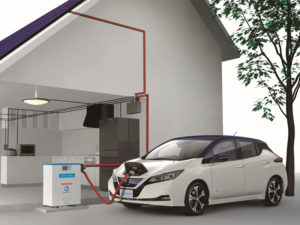
Vehicle-to-grid tech can bring valuable savings
Explore vehicle-to-grid
Philip Valarino, head of EV projects at EDF
“The perception still exists amongst businesses that transitioning their fleets to electric vehicles is a costly and inefficient process, but with the ever-advancing technology emerging in this space, this is being dispelled.
“The EV market is transforming at pace and many new services allow users to balance the grid and simultaneously work towards their business goals by providing financial savings. By taking full advantage of vehicle-to-grid technology, some services are able to provide £350 in savings per charger each year, which equates to approximately 9,000 miles of driving charge per year. These small changes can create a huge positive impact not only for individual businesses, but the environment as a whole.
“There is now more than enough opportunity for forward-thinking businesses to convert their traditional fleets to electric, providing a range of benefits and helping the UK on its journey to electric mobility.”
Adopt a whole eco infrastructure
Kevin Booker, IT systems and fleet officer at the Brecon Beacons National Park Authority
“Make sure you’ve got your infrastructure in place. And I’d say as well to think of your whole eco strategy. So if you’ve got a big industrial unit, consider solar panels. We didn’t do this in isolation, we’ve got the solar panels and we’ve got our hydro scheme which generates enough power for hundreds of thousands of miles per year.
“Do it as a complete carbon reduction programme. So think of the whole cycle with solar panels and electric charging. And make sure you have chargers in place. Because I still speak to people who think it will be practical to charge a Kona off a three-pin plug and then they get disappointed because they realise it will take days to charge. But you’ve set it up to fail.
“Basically, you need to think about how to set it up to succeed, rather than to fail. So you’ve got to have the whole training in place for staff, you’ve got to have the chargers in place. You need to think of it as a whole green package.”
Home energy tariffs are valuable piece of the equation
Charlie Cook, founder and CEO of Rightcharge

Home energy tariffs can be a valuable piece of the equation for fleets
“Home energy tariffs are a sometimes underappreciated but a valuable piece of the equation for fleets whose electric vehicles may be charged at home. An employee charging on a specialist ‘EV-friendly’ home energy tariff vs a standard home energy tariff could be saving the fleet upwards of £1,000 per year on the home EV charging bill alone. EV-friendly tariffs are also so well-priced that the homeowner often sees a significant reduction in the cost for running their home, too.
“There is also a carbon aspect to this. EV-friendly tariffs most often offer an off-peak rate for electricity overnight and the UK’s electricity grid is around 25% cleaner overnight than it is during the evening. The reason for this is that the evening peak in electricity demand requires our gas-fired power stations to be turned on; once that demand dies away we are left with the majority of electricity coming from clean sources like wind. If fleets are encouraging their employees to switch to appropriate tariffs that will save both the business & the employee money, they are simultaneously encouraging charging behaviour across their fleet that is far less carbon-intensive.”
Investigate flexible leasing solutions
Karl Howkins, managing director of SOGO
“We are seeing growing numbers of customers adopting a flexible leasing model to make the transition to electric vehicles. The appeal of a monthly lease is that the business and drivers can see if an EV is the right fit for them and enables vehicles to be changed frequently for newer and more technologically advanced models.
“The beneficial tax environment is working to push record numbers into EVs, and certainly the positive impact on salary sacrifice schemes is notable. We believe that its essential that companies have access to flexible leasing to help the adoption of EVs and take away many of the barriers to change.”
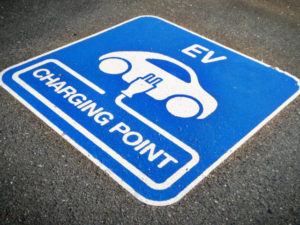
EV infrastructure is still a major barrier but public charge point numbers are growing
Government action on charging still crucial
Jon Lawes, managing director of Hitachi Capital Vehicle Solutions
“Today we mark World EV Day and celebrate the progress of the sector to date, with EVs now overtaking diesel registrations on a regular basis thanks to a great choice of models, financial incentives and better public charging provisions.
“We’ve seen great strides in charging infrastructure, particularly with Gridserve and their Electric Highway, which is targeted to cover 85% of the UK motorway network.
“EV infrastructure is still the main barrier for the mass uptake of alternative fuel vehicles but it’s pleasing to see public charge point numbers growing, with over 25,000 installed currently. The UK government target of circa. 400k chargers by 2030, is a true challenge, so continued investment in charging infrastructure remains critical.
“Transitioning fleets and consumers to EVs is a crucial strategy in order for the Government’s net zero target to be realised by 2050 and we’re passionate about making electrification strategies a reality with our unique full end-to-end decarbonisation solution to managing vehicle, infrastructure assessment and implementation.”












